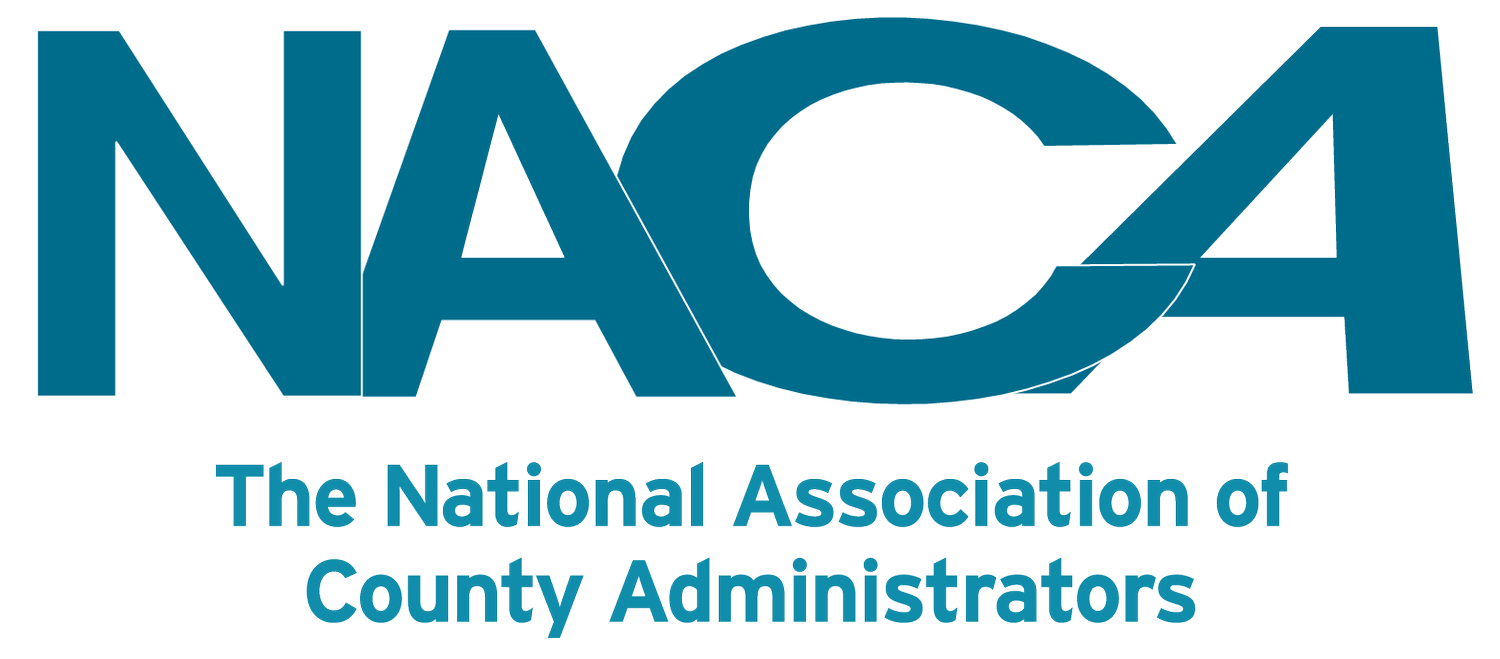Stormwater Parks Program: The Pima County Regional Flood Control District’s Incremental Approach
From prolonged droughts to shifting seasonal rainfall patterns and forecasts of fewer but more intense storms, the Pima County Regional Flood Control District (District) is navigating a complex and changing climate. As part of a new initiative, the District is working to transform available parcels in older floodprone neighborhoods into stormwater parks to build neighborhood-scale resilience. These projects not only reduce the volume of stormwater flowing in the roadways but also enhance community well-being by incorporating expanded tree canopies, multiuse trails, and gathering spaces all designed with native plant palettes to create healthier, safer, and more livable neighborhoods.
The District located in southern Arizona was established in 1978 to protect public safety through flood hazard identification, the construction and maintenance of stormwater infrastructure, and public outreach. Over the years, the District has remained innovative in its approach—developing programs such as the Floodprone Land Acquisition Program (to purchase properties from willing sellers facing flood risks), pioneering the use of soil cement bank protection, and implementing large-scale ecological restoration and water harvesting projects.
The latest evolution of this work is the creation of the Stormwater Parks Program. Stormwater parks are designed to direct runoff from streets, parking lots, and rooftops into landscaped basins where the water can infiltrate into the ground and support vegetation. These projects are less about managing 100-year flood events and more focused on incremental, watershed-level improvements. Although generally at the neighborhood scale their size and capacity are often determined by the available space rather than a fixed volume. In addition to reducing localized flooding, stormwater parks offer a range of co-benefits, including mitigating the urban heat island effect, increasing shade and habitat value, improving air and water quality, enhancing neighborhood aesthetics, and providing new community gathering spaces. Stormwater parks fall under a broader category known as Green Stormwater Infrastructure (GSI) which refers to engineered systems designed to manage stormwater by mimicking the natural processes that occur on undeveloped land, such as infiltration, evapotranspiration, and the use of vegetation to slow and filter runoff.
The idea for the program originated in 2018, following two significant monsoon flood events in 2017 that inundated dozens of homes in the Christmas Wash watershed within the City of Tucson, Arizona. In response, the District initiated discussions with City officials to explore mitigation strategies for reducing recurring flood impacts. While the City holds regulatory jurisdiction over the affected residential neighborhoods, as a special taxing district, the District had the technical expertise and resources to support a larger-scale response.
Due to the highly urbanized nature of the Christmas Wash watershed, developed in the 1940s and 1950s before modern stormwater management standards, most runoff travels through the street network. A regional-scale solution capable of addressing a 100-year storm event would have required the acquisition of entire city blocks, which was not feasible. Instead, the District and City agreed to pursue neighborhood-scale interventions. While smaller in scale and less impactful for major flood events these interventions offer substantial benefits: additional green space, expanded tree canopy, improved water quality, and enhanced community value. They also present more feasible opportunities for land acquisition within the watershed.
To implement the program, the District and City established a cooperative framework for site management. While the District had the capacity to fund the initial construction of the parks, it was hesitant to assume responsibility for maintaining the park-like features of these spaces which are located quite a distance from existing District facilities—the City, through its Storm to Shade (S2S) initiative, agreed to oversee maintenance of the landscaping and amenities. In 2022, an Intergovernmental Agreement was finalized outlining the City's role in managing the park and landscape features and performing routine maintenance, while the District retains responsibility for the stormwater infrastructure (e.g., inlets, outlets, and berms). This dual-maintenance model allows both entities to leverage their strengths and ensures regular site inspections.
Site selection for stormwater parks considers multiple factors:
Availability of space for meaningful floodwater retention.
Opportunities in underserved neighborhoods.
Potential for expanding existing riparian areas.
Use of reclaimed water for plant establishment.
Compatibility with existing utility infrastructure.
Feasibility of converting turf to native vegetation.
Availability of reliable maintenance partners.
The District regularly collaborates with S2S and other stakeholders to identify and evaluate suitable stormwater park sites suitable for recharging stormwater and diversifying our local water resources. A 10-year plan has been created for stormwater park locations. The District created a Mapping a Sustainable Future Story Map that shows the existing and planned stormwater parks.
The process for planning and designing a stormwater park is very community oriented with the District engaging and collaborating with the neighborhood residents. These meetings with residents begin early in the process to understand community needs and preferences, while keeping the primary focus on flood mitigation. Common community elements include decomposed granite walking paths, benches, picnic tables, and interpretive signage. Additional features like Little Free Libraries, edible native plants, and nature play areas are sometimes incorporated. The District also models the hydrologic and hydraulic impacts of the proposed park to identify flood hazard reduction and benefits Stormwater Parks provide to the watershed. Final plans are then submitted to the City for review and permitting with S2S given a final opportunity for input.
Each new stormwater park is funded through the District’s tax levy, and on average the cost ranges between $500,000 and $1 million depending on project size and complexity. The next stormwater park, located in the Julia Keen neighborhood, is scheduled to begin construction in the Fall of 2025. To date, the District has completed six stormwater parks with a seventh currently under construction.
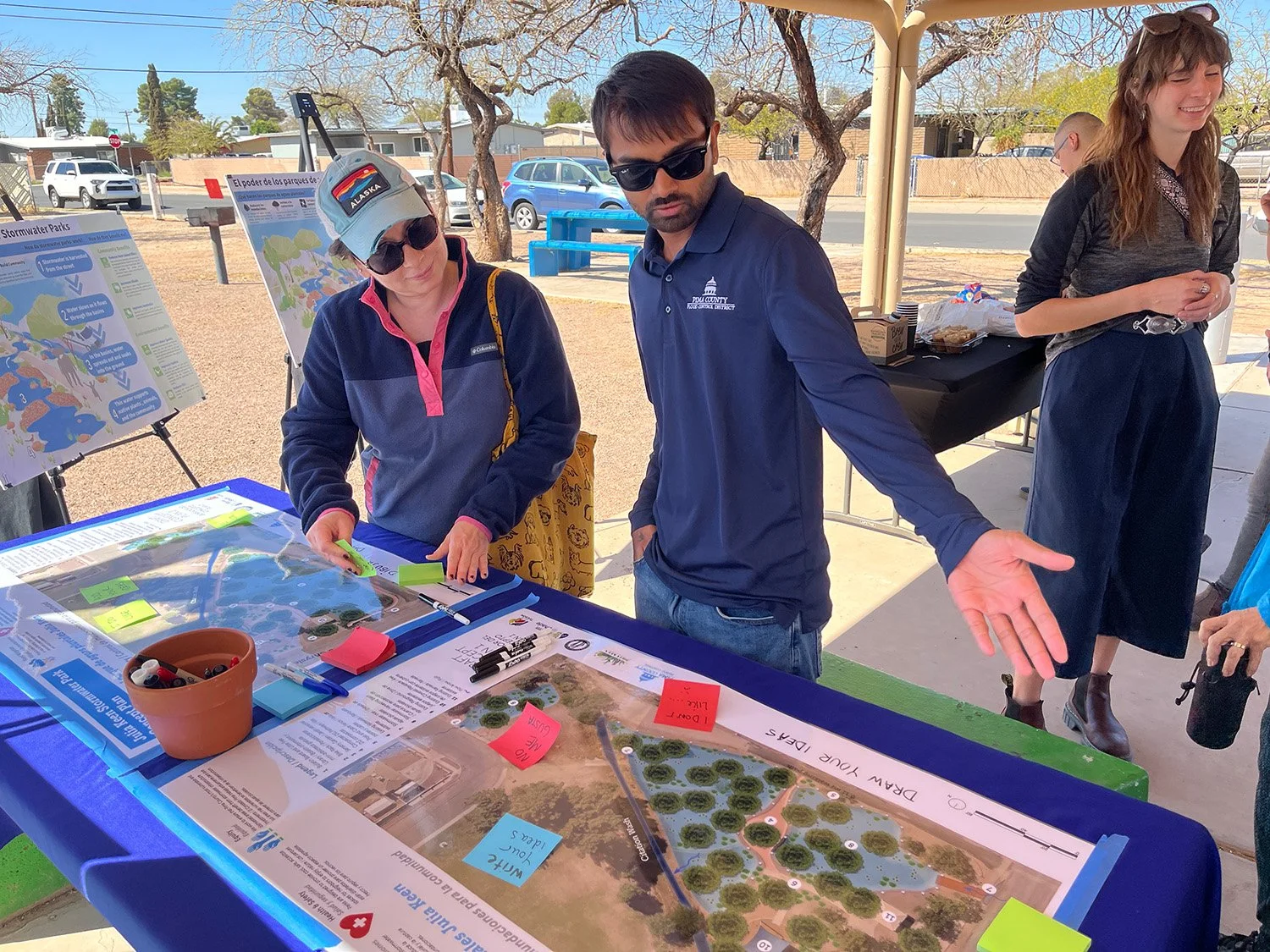
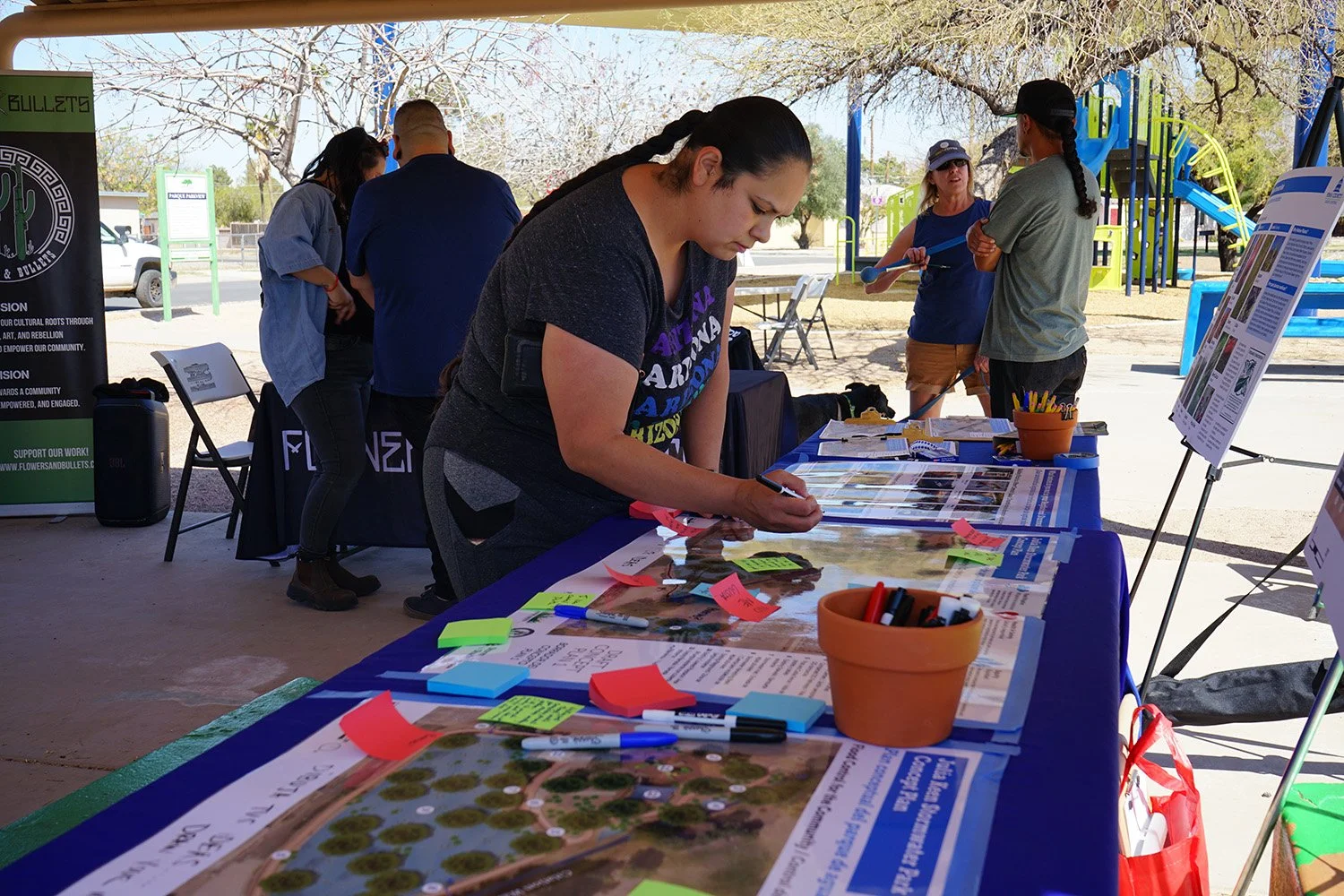
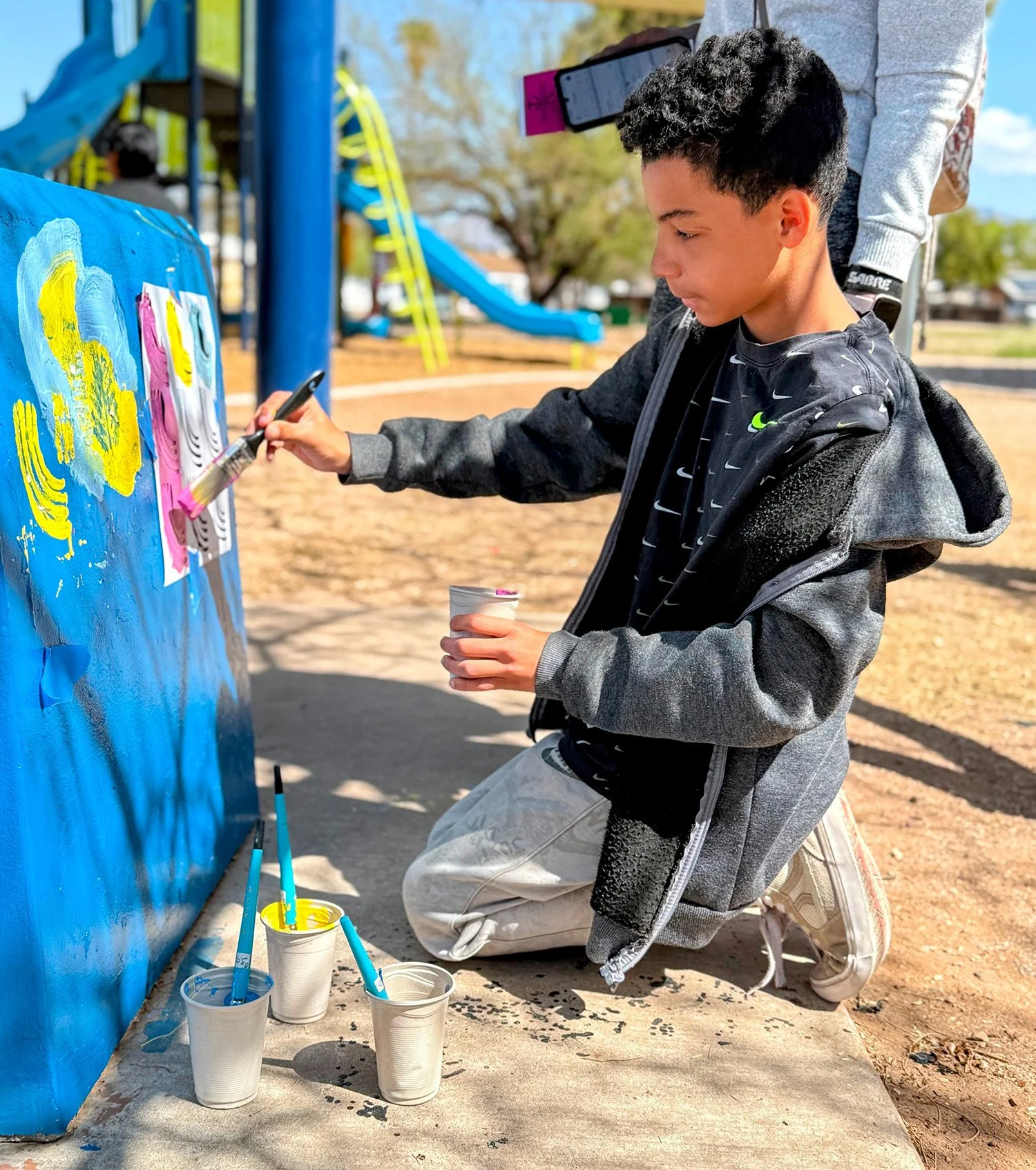
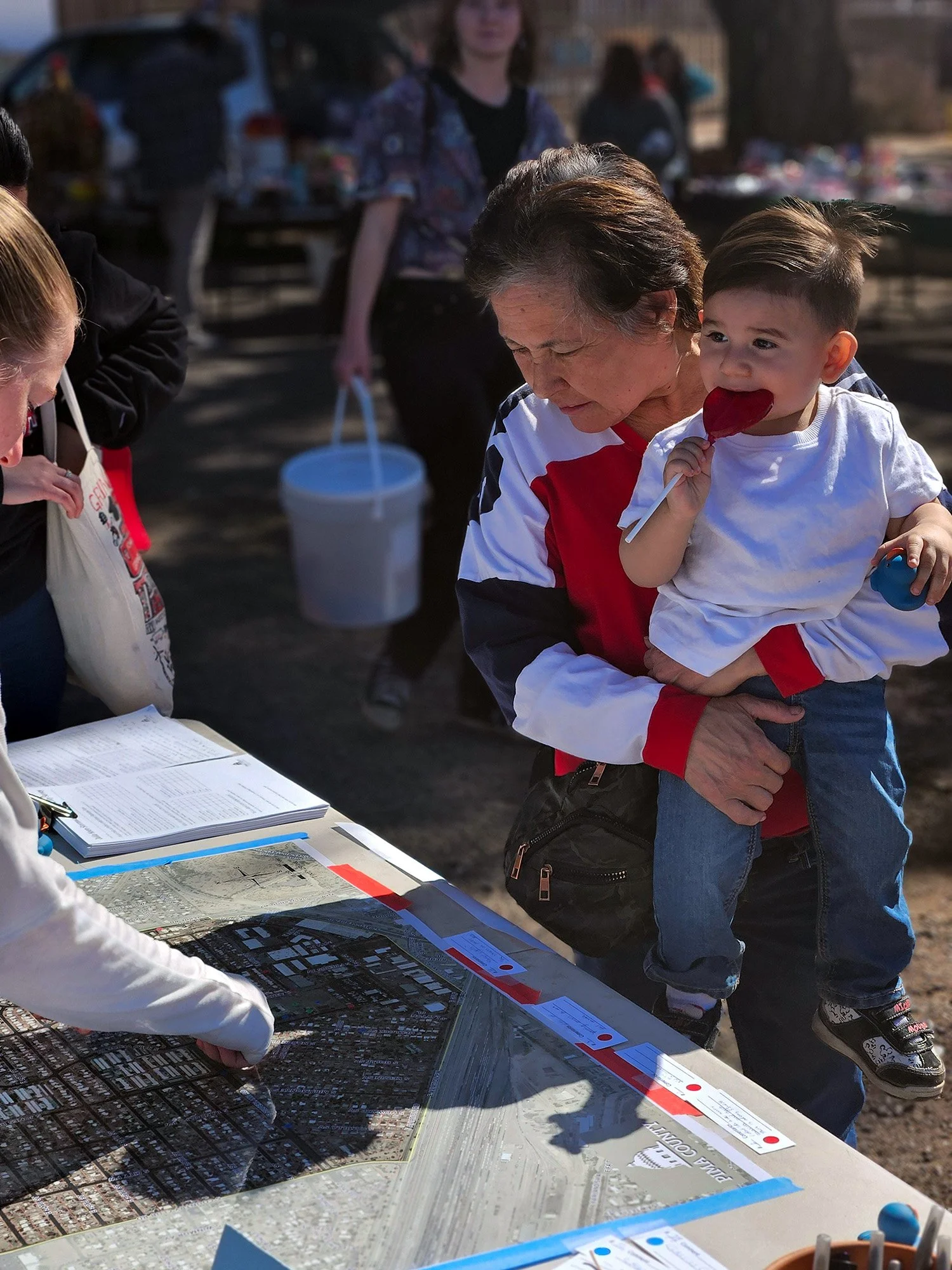
In an effort to expand the Stormwater Parks Program beyond the City, the District has begun partnering with other jurisdictions within the County. The seventh stormwater park, Wa:k Community Stormwater Park, is currently under construction within the San Xavier District of the Tohono O’odham Nation. Under this partnership, the San Xavier District will maintain the park elements, while the District will continue to maintain the flood control infrastructure. Notably, the San Xavier District leveraged the District’s financial contribution to secure over a $1 million grant from Arizona State Parks for enhanced site amenities.
This effort by the District to build additional partnerships with other jurisdictions and tribal nations, including the Tohono O’odham Nation and Pascua Yaqui Tribe, will expand the reach and impact of the program. These collaborations will foster more community-specific solutions and introduce new maintenance partners furthering the program’s success throughout Pima County.
In addition to the Stormwater Parks Program, the District is advancing several prominent initiatives to support the region’s approach to GSI and advancing Pima County’s ongoing mission to address community health and sustainability. The District is leading three distinct efforts: 1) A Community Water Advocates Training in Equity and Resilience (Community WATER) Program; 2) Developing a regional GSI workforce development roadmap called the Sonoran Urban Resilience & Green Infrastructure Exchange (SURGE); and 3) Publishing an updated peer-reviewed GSI Details and Specials Manual. These efforts further support the program by addressing public perception and understanding of sustainable stormwater infrastructure approaches and projects, developing career pathways to support the advancement and expansion of sustainable stormwater infrastructure, and leveraging the knowledge of this region into a consolidated and accessible set of regionally appropriate construction details and standards.
The Community WATER Program, in partnership with the non-profit group Ironwood Tree Experience, is designed as a response to increased demand and desire for environmental education, especially in underserved communities where there is often a lack of community awareness, understanding, and engagement with District-led stormwater parks. Recognizing the disproportionate impacts of flooding and urban heat in underserved communities, the program’s goal is to foster local knowledge, stewardship, and advocacy around stormwater parks in impacted neighborhoods – leveraging these vital public green spaces as nodes for education, community-centered programming, and workforce training. Rather than simply educating for awareness, Community WATER’s equity focus is centered on empowering communities to lead the conversation around stormwater infrastructure. The program helps strengthen neighborhood networks and creates paid opportunity pathways for residents, especially youth and educators, to shape, inform, and engage in real-world green infrastructure and climate resiliency efforts directly within their own community. This long-term, relationship-driven model builds a foundation for collaboration, deepens trust between the District and the communities it serves, and invests in a future where GSI solutions are shaped by those most impacted.
In 2025, the Community WATER Program will offer 20 teachers educational and advocacy training on the need and benefits of GSI through workshops in stormwater park sites in their communities. Upon completion, teachers will support this partnership through outreach, recruitment, and engagement of up to 100 students in the next educational session offering programming at stormwater parks for hands-on student participation.
Students and teachers will learn about the function of stormwater parks and the role they play in leveraging GSI as stormwater management solutions, experiencing real-world responses to climate change impacts and challenges most apparent in their desert community and neighborhoods. As trained advocates, students and teachers will have opportunities to support upcoming stormwater parks under development in identified equity areas by the District and partners creating a network of informed community members who can support GSI initiatives and help build trust between the District and the public.
The District also hosts and leads SURGE, which is a collaborative network of public agencies, community organizations, educators, and private-sector partners working to expand GSI across the Sonoran Desert region. SURGE is currently advancing a local workforce development effort to develop strategies and priorities for growing GSI workforce pathways and readiness. Working with their network of partners, the District is leading regional efforts to document existing training programs, uncover skills gaps, and identify new workforce training opportunities and career pathways to grow a local climate ready workforce. This work will culminate in a draft, community-informed roadmap that outlines early strategies and priorities for growing GSI occupations and guiding future workforce development collaborations regionally. The roadmap will provide the foundation to grow, expand and coordinate regional GSI career options to meet growing demands for these skills. By laying this foundation, the initiative supports the Pima County Prosperity Initiative’s goals of growing economic opportunity, reducing poverty, and preparing residents especially youth and other underserved groups for stable, climate-resilient jobs.
Finally, the District has undertaken the development of a GSI Standard Details And Special Provisions Manual, specifically for GSI, to aid the design and construction of stormwater parks and other regionally appropriate GSI features in the semi-arid Southwest. This effort builds on the previous efforts to put together a Low Impact Development Manual. The new details contain strategies to address stormwater management in a variety of conditions from channels and streets to parks and parking lots with an emphasis on collection in urban areas that could be incorporated by consultants into development projects.
Las Vistas Stormwater Park, Tucson, AZ - The park provided new green stormwater infrastructure, benches, and walking paths connecting to Utterback Middle School and close to Cavett Elementary and the Southside Community Schools.
The District’s goal for these details is for regional adoption by surrounding jurisdictions. With the goal of regional consensus, the District hopes that developing this set of details will encourage further collaboration between jurisdictions and facilitate the construction of stormwater parks by creating standardized details that can be applied across a variety of contexts.
The District’s Stormwater Parks Program exemplifies innovative, community-centered flood management by integrating effective stormwater control with environmental stewardship and recreational opportunities. By focusing on neighborhood-scale solutions, the program not only reduces flood risks but also enhances quality of life through accessible green spaces that foster community engagement and support native ecosystems. With multiple completed and ongoing projects these parks are already making a measurable impact by managing frequent storm events and promoting safer, more connected neighborhoods. As the program expands, its incremental approach promises to amplify flood resilience across the region while nurturing vibrant, sustainable urban environments for all residents.
District Engineering and Landscape Architecture Division: (left to right) Abigail Power, Intern (University of Arizona College of Landscape Architecture); Nichole Casebeer; Janice Huges, PE; Deirdre LaRochelle, PE; Matt Lutheran, PLA; Nanda Srinivasamurthy, PE
Authors:
Deirdre LaRochelle, PE, Engineering and Landscape Architecture Division Manager
Matthew Lutheran, PLA, Landscape Architecture Project Manager
Nichole Casebeer, Landscape Architecture Project Manager
